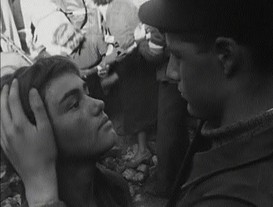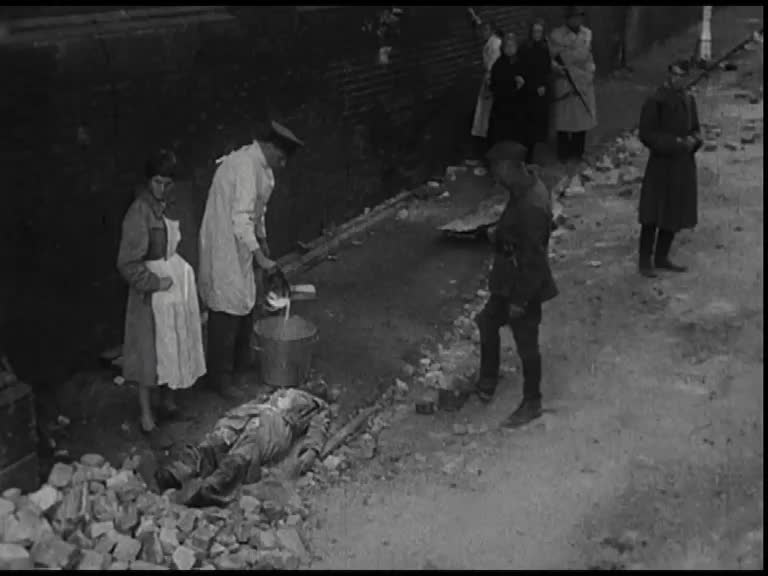Peter Watkins
1960.
United Kingdom (Great Britain).
18’
En aquesta obra amateur, Peter Watkins recrea episodis de la revolució hongaresa de 1956 i continua aprofundint en els mètodes que ja havia utilitzat a The Diary of an Unknown Soldier. Com el mateix director declara, va estudiar gran quantitat d’imatges fotogràfiques d’aquest esdeveniment històric, i és possible que això influís en els nombrosos exemples de personatges que miren directament a la lent de la càmera, aspecte que més endavant es convertiria en un dels elements més memorables del llenguatge cinematogràfic de Watkins. D’aquesta manera, s’infringeix una convenció tradicional del cinema: la ficció que els actors no veuen la càmera. Paradoxalment, és precisament la reacció dels personatges davant la càmera que subratlla l’acte de rodar i destrueix la il·lusió del film com a realitat intacta, que produeix la impressió que la naturalesa dels fets és autèntica, documental. La càmera pateix vaivens en els moments de violència i la imatge es desenfoca i adquireix una estètica semblant a la dels reportatges dels informatius de televisió.

